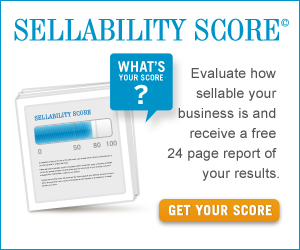The Four Mistakes Retirees Need To Avoid When Creating A Retirement Income Plan.
Podcast: Play in new window | Download
Subscribe: Apple Podcasts |
WELCOME TO THE KEY TO RETIREMENT™ PODCAST!

To subscribe to the podcast, please use the links below:
If you have a chance, please leave me an honest rating and review on iTunes by clicking here. It will help the show and its ranking in iTunes immensely! I appreciate it! Enjoy the show!
In This Episode
In this edition of The Key To Retirement, we’re going to discuss the 4 mistakes retirees need to avoid when creating a retirement income plan.
Bonus Segment
In today’s bonus segment we’re going to show you a trick to listen to your information in half the time it usually takes.
And if you’d like to get a jump start on finding the answers to your key financial planning questions, using our proven system, you can book your risk free, no-obligation initial meeting. One of our specifically trained Certified Financial Planners will be pleased to walk you through The KAIZEN Financial Planning Process. Visit us online, at ironshield.ca, to obtain our contact information, then simply call or email to book your free initial meeting.
Links to things mentioned in this episode:

 Subscribe via RSS (non-iTunes feed)
Subscribe via RSS (non-iTunes feed)
Episode Transcript
Scott:
In today’s feature segment, we are going to talk about the four mistakes retirees need to avoid when creating a retirement income plan.
And these mistakes are:
- Not factoring in inflation
- Not factoring in income taxes
- Poorly structuring investment management fees, and finally
- The myth that you need to match your fixed income exposure to your age
So, let’s start with the mistake of not factoring inflation in to your projected retirement income needs. How long your money lasts is a direct result of how much it’s going to cost you each year to live your life.
So, let’s say you determine that “life” is going to cost you $5,000/month. As time goes on, inflation begins to eat away at the purchasing power of that $5000. “Things” – those things you eat, you wear, you drive – get more and more expensive. Don’t get fooled into thinking that your costs today are going to match your costs tomorrow. They won’t.
Need proof? In 1962, it cost 5 cents to mail a letter in the US. 30 years later it was 29 cents. 19 years later it costs 44 cents. That’s an average inflation rate of 4.53%. Did your income grow by more than 4.53%/year?
During your working years, it is easier to anticipate inflation and most salaries at least keep pace with the general increase in prices, but it becomes a real problem when you’re on a fixed income. And that’s when your standard of living can be affected, if you haven’t planned properly.
Let’s get back to the example of $5000/month that you need to cover your expenses in retirement. You’ve calculated that in today’s dollars. But your retirement is likely to last 20+ years.
Over the last 20 years in Canada, inflation has averaged about 2% a year. It doesn’t sound like much, and of course how deeply you feel the increase in prices depends upon the actual goods and services you buy compared to the “basket” of goods tracked by the Consumer Price Index or “CPI”. Regardless of that though, if your expenses increase by 2% a year, in 20 years it will cost you $7430/month to live that same life.
Inflation is what I call the silent “killer” of financial plans. If you don’t factor inflation in, you may as well not even bother writing the financial plan.
To put it another way, a $1,000,000 portfolio growing at 8% a year with a monthly withdrawal of $5,000 will be worth $2,165,788 in 25 years.
However, if you adjust the $5,000/month to keep pace with inflation, and we’ll use the 2% inflation rate we just talked about, the account will have a value of $1,408,173 in 25 years – a difference of $757,615!
Ok, so now we know the effects of inflation.
But, mistake #2 would be not factoring in income taxes.
If you need $5,000/month to cover your living expenses, you will need to withdraw more than $5,000/month to have enough to pay the income tax bill and still have enough left to cover your living expenses.
Using the previous assumptions, but now taxing that $5000/month at a 30% tax bracket, you will have exhausted your portfolio by the 19th year.
Cathy:
Reminds me of the old saying, “Nothing is certain but death and taxes”!
Scott:
You can say that again.
Now, once you’ve taken into account inflation and taxes, you’re still not done.
Mistake #3 is poorly structuring the investment management fees paid to your investment management team. Another common mistake.
Now, chances are you’re investing in mutual funds. And, if you are, then you are paying a fee to the mutual fund company to manage your money. On average, you would be paying approximately 2.5% for this.
What this means is that if your portfolio generated an 8% gross return, you would only see 5.5% as you paid 2.5% to the manager to manage the account.
Now, here’s a little trick to reduce the impact of the management fee – without changing your portfolio.
Contact your advisor and say that you want to change the way the management fee is charged to your portfolio. Instead of having the MER paid before you see your distributions, ask to have the fee “unbundled”.
What this means is that they will pay to your portfolio the full return generated (in this example it was 8%). Then, they will charge your portfolio the management fee (in this example, 2.5%). By separating the fee from the return, you’ve earned yourself a tax deduction of this amount on any non-registered investment accounts you have.
CRA’s bulletin IT-238R2, states that you can deduct from your taxable income, any amount you paid for investment counseling on your taxable accounts. Therefore, at a 30% tax bracket, a 2.5% management fee turns into a net management fee of 1.75%.
You know I find it amazing how people often look to improve performance by adding more risk to a portfolio, when sometimes simple tax deductions will do the trick for you.
If you want more information on this, visit www.freefinancialplanningvideos.com to watch the free video that explains exactly how to do this.
And finally, let’s dispel the myth that you base your asset allocation on your age.
The theory is that you match the percentage of your portfolio allocated to fixed income to your age. Now, on the surface this sounds pretty logical. I mean if you are 80 years old, doesn’t it make sense to have 80% of your portfolio in bonds? But, if you follow this approach, you will be setting yourself up for a major drop in income.
With interest rates as low as they are today, bonds are paying next to nothing and the upside is limited with the threat of rising interest rates.
I spoke with Mike Flux, VP of Connor, Clark & Lunn Private Capital – one of the largest investment counseling firms in Canada – and their analysis shows that the return expectation on fixed income is running between 2-5%, before fees and taxes and inflation.
Such a heavy weighting in that type of security will make it very difficult to counter the combined effects of inflation and taxes that we’ve talked about today. Stocks, or the equity securities in your portfolio are better suited to at least keeping pace with inflation over the long run, as companies’ revenues increase and you share in those earnings through either dividends or capital appreciation.
So, the old adage of match your fixed income exposure to your age may lead you straight to under performance. Like so many other investment rules of thumb, it oversimplifies complex issues.
No matter how old a person is, a sound asset-allocation program starts with one’s net worth, expected income needs and risk tolerance.
Everyone’s circumstances are different. The age-allocation adage makes little sense for most people and may just interfere with you achieving your goals.
If you’re interested in finding out what other options are available to help bolster returns in your portfolio, please visit the show notes. I will post a link to an exclusive presentation called “A trifecta investment solution designed to enhance performance, reduce volatility and provide a tax-efficient income”.
So, go now and re-crunch your retirement income numbers – making sure you have accounted for all of these variables. Contact your investment advisor to change how your portfolio’s management fee is paid so you can capture a new tax deduction known to very few Canadians.
And, visit www.freefinancialplanningvideos.com to get immediate access to The Six Mistakes Retirees Make With Their Finances FREE Video Series and find a certified financial planner who you can work with.
![]()
![]() Subscribe via RSS (non-iTunes feed)
Subscribe via RSS (non-iTunes feed)











